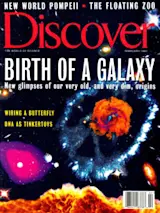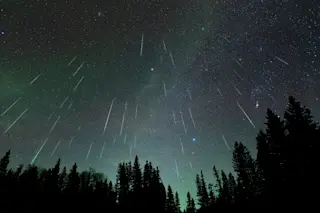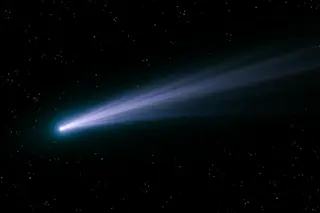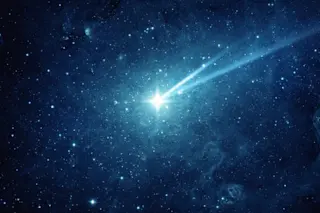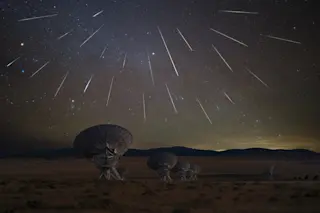The year’s celestial highlight now starts its parade through the predawn sky. It’s Hale-Bopp, visible to the naked eye low in the northeast. More than any other denizens of the cosmos, comets cause astronomers to gobble down antacid tablets. With just a few observations, we can know precisely where a comet will be and how fast it’ll move. But the appearances of the comet, unlike those of Neptune or the vice president, are unpredictable. This lends comets intrigue and charm. It also drives the experts bonkers.
Case in point: Last September Hale-Bopp dimmed for a few weeks. Was this just a lull in the outgassing--the process whereby the comet’s ice-ball nucleus weaves its tail? Or was Hale-Bopp finally showing its true, drab colors? Astronomers, who had been predicting the best comet in more than a decade, began hedging their bets. But in October, Hale-Bopp obediently (and just as mysteriously) returned to its predicted light curve.
Comets can also easily be overachievers. The previous two bright comets, Hyakutake last March, and West two decades earlier, appeared two to seven times more brilliant than expected.
The factors that produce a great comet are straightforward enough to allow a checklist. First, is the candidate a giant? Hale-Bopp meets this criterion with a hefty nucleus estimated at more than 20 miles across. (Hyakutake, in comparison, had a diameter of less than 1 mile.)
Second, do its ices, heated by the sun, rapidly and spectacularly sublimate to gas? Or is it a periodic comet that has repeated its road show too many times to be energetic or dazzling? Here again, Hale-Bopp is an almost explosively active object.
Third, what kind of tail is produced? Most noteworthy comets display a dim blue gas tail in addition to a whiter, brighter dust tail. Hyakutake sported only a long thin gas tail; Hale-Bopp, thus far, is a dusty monster while also showing early signs of a gassy blue plume. Mark off another plus in the Hale-Bopp column.
Finally, what is the geometry of the comet as it nears the sun and Earth? Hyakutake came within 9 million miles of Earth, imparting an extremely rapid change of position from night to night. Leisurely Hale- Bopp, by contrast, will always be farther from us than the planets Venus, Mars, and Mercury and the sun itself. So it would appear a hundred times fainter than Hyakutake if both comets had the same intrinsic brightness (we don’t yet know how they compare). Worse, its tail will point almost directly away from us, foreshortening it to a mere 10 degrees. Bottom line: Expect a bright, ghostly white comet with a tail about the size of a clenched fist held at arm’s length. Only Hale-Bopp’s immense size and active chemistry will balance its disheartening distance and hapless geometry.
Hale-Bopp, now visible to the naked eye, appears striking through ordinary binoculars. The best predawn viewing is from February 4 to 18 and from March 6 to 20, in the northeast. Then the scene switches to the evening sky at dusk, with the comet low in the northwest. The best viewing dates are from March 28 to April 10 and again from April 26 to May 9. The latter two periods should find the comet at its brightest.
If the comet is two magnitudes dimmer than expected, it will be impressive only from pure country skies or dark nights at sea. If Hale-Bopp instead grows two magnitudes brighter than predicted, it will dazzle the world. But why wait? Start observing this month, an hour before sunrise, and see for yourself whether we’re heading toward observer heaven or comet purgatory.


